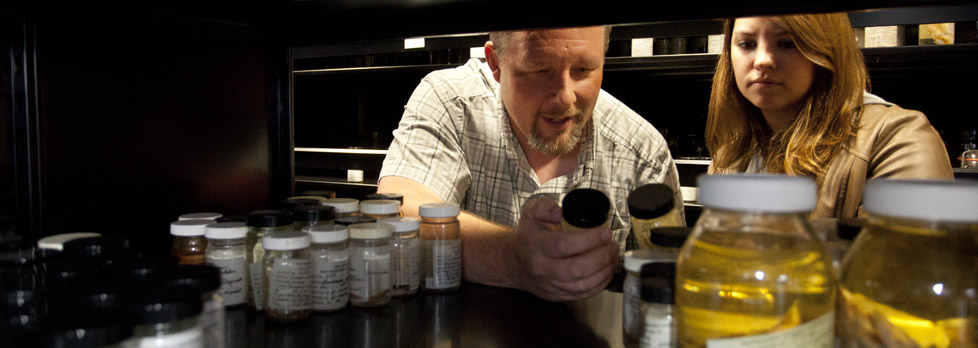Something's Fishy Here
Grad student gets hooked on NSF-funded research project on fish species
Monday, January 5, 2015

Southeastern graduate student Kimberly Foster originally moved from her home in Shreveport to come to Southeastern to study nursing. While taking her initial science courses for nursing, she developed a passion for biology and changed her major, graduating with her bachelor's degree last spring.
"I knew I wanted to work with Dr. (Kyle) Piller," professor of biological sciences and an ichthyologist or fish specialist. "He let me volunteer in his lab, and I soon learned how to quantify body shape changes between and among organisms," said Foster.
She was hooked, so to say. Foster's graduate thesis is now focused on an endangered group of freshwater fishes, both live bearing and egg laying, in the family Goodeidae, existing in a wide range from Nevada to the Mesa central of Mexico.
Foster now works in Piller's lab, where she is assisting in one of the university's highest funded research projects. His $607,800 three-year grant from the National Science Foundation allows him to include two graduate students and several undergraduates in his research of Cyprinodontiformes, a diverse order of fishes that consists of 10 families and more than 800 species distributed throughout the world.

Biology graduate student Kim Foster works at a microscope, where she spends much of her time quantifying body shape changes among selected fish species.
The group includes killfishes, guppies and swordtails, all species well known among aquarium, toxicologists and cancer researchers, he explained. Other groups in the order include splitfins, or Goodeidae, an imperiled group of freshwater fishes that occur in Mexico and the southwestern United States.
"I am so thankful and excited to have this opportunity," said Foster, who went to Mexico last semester for the International Live Bearing Fish Symposium, where she presented a poster in Spanish with the help of another graduate student, Diego Elias of Guatemala. "We are returning to Mexico in January to collect fish specimens for my thesis and Kyle's other projects. Travel is something not all graduate students get to do, so I am very appreciative to have this opportunity."
Specimens collected on the trips will be added to Southeastern's Vertebrate Museum, which currently contains a fish collection of more than 80,000 specimens. The collection, started in the 1950s as a teaching aid, includes species from the Lake Pontchartrain Basin and adjacent regions.
"All this work is done in hopes of finding a better taxonomic classification for these fish and to help conserve their habitats," Foster said.






